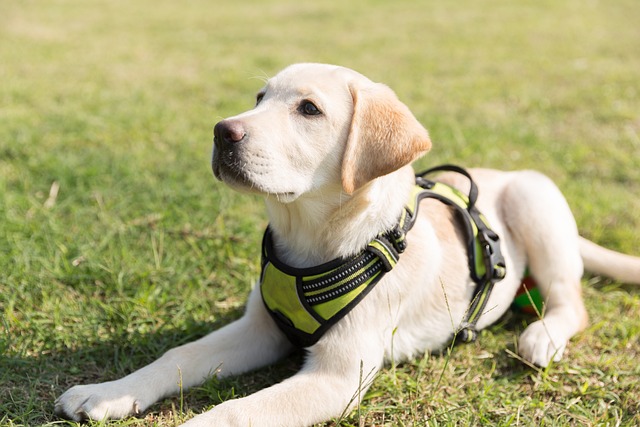
What are the disadvantages of grain-free dog food
I sat with my friend Maya in her Atlanta apartment kitchen last month, as she stared at a half-empty bag of grain-free dog food and her 3-year-old German Shepherd
I sat with my friend Mia on her New York City apartment floor last weekend, where her 3-year-old French Bulldog, Louie, was scratching his ears so hard he whimpered—his belly was dotted with red, itchy bumps, and his paws looked raw from licking. “The vet said it’s allergies, but I can’t afford frequent visits. Is there real dog allergy relief at home that actually works?” Mia asked, holding up a bottle of human anti-itch cream I quickly waved away. If you’re a new U.S. dog owner staring at a pup in discomfort, the answer is yes—safe, gentle home fixes can ease allergies, but they start with understanding what’s triggering the itch.
To grasp why home relief works, let’s break down dog allergies simply: A dog’s skin is thinner than ours, with a delicate barrier that keeps irritants out. When allergens (like pollen, dust mites, or even mold from damp apartments) break this barrier, their body releases histamines—the “itch chemical” that makes Louie scratch. Mia’s vet explained it like this: “It’s like your skin after a mosquito bite, but their skin soaks up irritants faster.” Unlike human allergies, dogs show most symptoms on their skin (not just sneezing), so home relief focuses on calming inflammation and cutting down triggers—not just masking the itch. And since scolding a dog for scratching violates U.S. animal welfare standards (they’re not misbehaving, just uncomfortable), home care needs to pair relief with positive reinforcement.

Here’s how to do dog allergy relief at home, step by step, using Louie’s progress: First, slash indoor triggers (the biggest culprit for apartment dogs). Dust mites love couches and dog beds, so wash Louie’s bed weekly in hot water (130°F kills allergens) and use a HEPA air purifier near his favorite spot—Mia noticed his scratching dropped after 3 days of this. Wipe his paws and belly with a damp cloth after walks to remove pollen (Louie hated this at first, so Mia gave him a freeze-dried chicken treat afterward—positive reinforcement makes him sit still now). Second, soothe skin with gentle topicals. Vet-approved colloidal oatmeal spray calms redness—Mia spritzed Louie’s belly twice a day, and the bumps faded in 48 hours. For dry, flaky spots, warm a teaspoon of unrefined coconut oil between your hands and pat it on (never rub!)—Louie licked a little (safe in small doses) and stopped chewing his paws. Third, boost their gut health (allergies often start in the gut). Add a dog-specific probiotic powder to their food—Mia mixed it into Louie’s kibble, and his overall itchiness lessened in a week.
For apartment living, keep a “allergy kit” handy: oatmeal spray, coconut oil, wipes, and treats. Avoid scented candles or air fresheners (they irritate sensitive skin) and vacuum carpets twice a week. When walking, stick to paved paths (tall grass has more pollen) and always carry poop bags—New York fines $250 for leaving messes, even when you’re rushing to get home and soothe an itchy pup. Never use human products (like Mia’s cream)—they can have toxic ingredients. Keep your dog’s rabies vaccine up to date (required nationwide)—vet visits are still key to rule out serious issues (like fungal infections that mimic allergies), but home care keeps symptoms manageable between trips.
A week later, Mia texted me a photo: Louie napping on the couch, no sign of scratching. Dog allergy relief at home isn’t about “curing” allergies—it’s about making your pup comfortable, one gentle step at a time. For Louie, it was clean bedding, oatmeal spray, and lots of treats. For your pup, it’ll be too.

I sat with my friend Maya in her Atlanta apartment kitchen last month, as she stared at a half-empty bag of grain-free dog food and her 3-year-old German Shepherd

I sat with my friend Molly on her Phoenix patio last month, where her 5-year-old Labrador, Cooper, lay dozing on a cooling mat

I sat with my friend Lexi on her Houston apartment couch three weeks after her 3-year-old Pug, Luna, survived heat stroke—Luna curled up on a cooling mat

Blind dogs rely entirely on their owners to keep their eye area healthy, as even small irritants can cause big discomfort. Start with daily checks—run a clean, damp cotton ball along the corners of their eyes to wipe away any crust or discharge.

I sat with my friend Mia on her New York City apartment floor last weekend, where her 3-year-old French Bulldog, Louie, was scratching his ears so hard he whimpered

Most dog owners notice their pup’s stinky breath or yellowed teeth at some point, and that’s when the question of cleaning costs pops up.